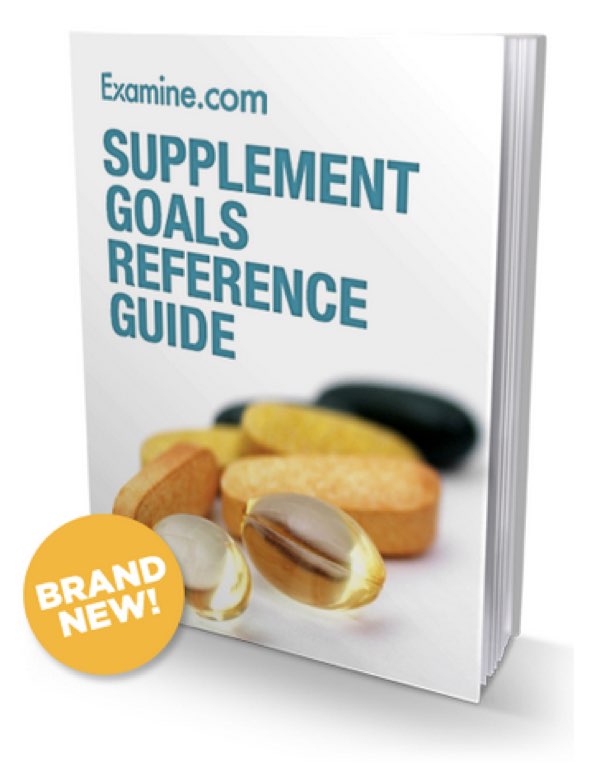Today’s guest post comes from Kamal Patel and the team at Examine.com. If you haven’t heard of Examine.com just yet, you’ve been missing out! Examine.com is the web’s best resource for evidence-based information on nutrition and supplementation. They are completely unbiased and only report on scientific fact, not speculation. The nutrition and supplement fields are filled with anecdotal information, false beliefs, and downright inaccurate claims about efficacy. Examine.com helps us sort through what is fact and fiction. Be sure to check out the special offer from Examine.com at the end of this article.
How to Enhance Recovery Beyond Nutrition
Training sounds pretty simple on paper. Just eat right, sleep well, and lift a little bit more weight every workout. But every workout takes place in real life, and real life can make training pretty hard.
To improve at the rate that you read about on internet forums – hitting a 315 pound squat or 225 pound bench press after a year of training – you need to train like an athlete. That doesn’t just mean going to the gym three times a week and downing a protein shake afterward. Optimal training only occurs when daily life doesn’t get in the way.
Training like an athlete while working a full time job or going to school is not easy, but fixing weak points in your habits and lifestyle can help avoid training setbacks and plateaus.
Alleviating Soreness and Joint Pain
Exercise causes muscle and joint pain. The severity of the soreness and how long it takes to recover depends on diet and lifestyle, as well as the kind of exercise performed.
The basics
A high-carbohydrate diet is the first step to alleviating post-workout joint pain. A low-carbohydrate diet, while potentially useful for fat loss, is not ideal for resistance training.
People on a low-carb diet should eat the majority of their carbohydrates in the post-workout period. Going into a workout with low glycogen is not ideal for strength training, but if joint pain is interfering with exercise, fixing the problem should be a priority.
Magnesium deficiencies can also exacerbate joint pain and cause muscle cramping in athletes. The lack of other electrolytes, like potassium, can contribute to pain. Potassium deficiencies must be alleviated through dietary changes, since too much potassium on an empty stomach can cause potentially fatal cardiac arrhythmia.
Troubleshooting Joint Pain
If dietary changes don’t alleviate persistent joint pain, anti-inflammatory supplements may be able to help.
Anti-inflammatory supplements are not as potent as pharmaceuticals like aspirin, acetaminophen, and aleve. However, curcumin and fish oil are both used to alleviate joint pain in athletes. Though the research on these two supplements is done in the context of arthritis, the benefits should theoretically extend to athletes as well. More research is needed to confirm this effect.
Cissus quadrangularis can alleviate the joint pain that results from specific injuries. If your post-exercise joint pain has persisted for years, you may want to consider consulting with a physiotherapist.
Do not supplement high amounts of anti-inflammatory supplements to dull injury pain. Continuing to work out after an injury can exacerbate tissue damage and increased recovery time, leading to overuse of pain-reducing supplements and permanent damage.
Alleviating Fatigue and Lethargy
There’s nothing like proper rest and nutrition to facilitate training, but sometimes you can’t avoid staying up late to finish a paper or getting up extra-early to beat the boss to the office.
The basics
Running a caloric deficit is great for weight loss, but not as great for energy levels. Though some people can go for long periods of time on reduced calories, a crash is inevitable. If your diet is interfering with your daily energy, consider a less drastic deficit.
The occasional all-nighter won’t have a long-term effect on gym performance, but consistently poor sleep will. Aim for six to 10 hours of sleep every night, and make sure your sleep environment doesn’t affect your recovery.
A healthy sleep environment is:
- A slightly cool room tends to facilitate sleep, while a puddle of sweat is awful to wake up in.
- Smart phones and tablets just before bed will disrupt melatonin secretion, leading to a more difficult time falling asleep.
- Ears don’t close like eyes do. Even if you sleep through the night, loud noises can still impair sleep quality.
- Caffeine-free. Any compounds that impair sleep will lower sleep quality, even for veteran coffee drinkers that can drink a pot of coffee at 8:00 p.m.
- Where you sleep and how long you sleep for should be the same from night to night.
A good sleep environment actually makes it easier to get out of bed in the morning, since improved sleep quality leaves you feeling more rested.
Troubleshooting sleep quality
Some sleep issues can be alleviated through supplementation. People that have issues with sleep latency, meaning they have trouble falling asleep, can supplement melatonin or lemon balm.
Melatonin is a hormone that regulates sleep, but people with no difficulty falling asleep will not experience any further sleep benefits.
Lemon balm is a light sedative used to alleviate intrusive thoughts that can interfere with sleep.
Supplements that improve sleep quality, as opposed to sleep latency, include glycine and lavender.
About three grams of glycine taken thirty minutes before bed will improve sleep quality, but the supplement becomes less effective after prolonged use. To use glycine in the long term, avoid taking it daily.
Lavender, used in aromatherapy, is associated with improved sleep. Rubbing lavender oil on a pillow before bed can also improve sleep, but some people may experience skin irritation due to long-term exposure of skin to oil.
If stress is causing reduced sleep quality or poor sleep latency, supplements called adaptogens can help the body adapt to stress, resulting in fewer stress-related side effects, like fatigue and anxiety.
The most popular adaptogens are ashwagandha, Rhodiola rosea, and Panax ginseng. Ashwagandha is sometimes supplemented by athletes because it may improve cardiovascular performance and muscular strength. Siberian ginseng is another adaptogen option for people that get sick often, though it has very little effect on physical performance.
Breaking through plateaus
There’s a lot of factors to keep track of during long term training. Hitting a plateau can be frustrating because it takes time to isolate the factor responsible.
The basics
Daily caloric intake is the biggest influence on physical performance. Carbohydrates are more effective for strength training than fatty acids, but both are necessary for busting through plateaus.
Addressing general energy levels, fatigue, and joint pain is also a vital aspect of breaking through a plateau.
Troubleshooting plateaus
Supplements that improve physical performance can be useful for breaking through training plateaus. Creatine is the go-to recommendation, while caffeine (400mg) can be used once or twice a week as a pre-workout supplement. Please note that although 400 mg is listed as a low dose in some studies, this would be a relatively high dose for someone who is caffeine naive.
There is preliminary evidence that suggests cholinergics like CDP-choline and Alpha-GPC may improve physical performance in a non-stimulatory way, but more research is needed to confirm this effect.
Identifying Lifestyle Weaknesses
To facilitate effective training, learn to isolate the weak points in your habits and work to improve them. Start with obvious factors, like staying up too late, and address others as they arise, whether in training, at work, or in life.

Special Offer for Inner Circle Members
Examine.com was kind enough to extend two special discounts for my Inner Circle members:
Examine.com Supplement Goals Reference Guide – This is the ultimate resource on supplements, and what they call “the cheat sheet” to better health, a better body, and a better life. They’ve done all the work and analyzed over 33,000 research studies to discuss over 300 supplements and 180 health goals. Within seconds you’ll be browsing around, identifying health goals you want to improve, and finding supplements that will help you get there. Best of all, this is a lifetime eBook. Every morning the guide is updated based on the latest scientific evidence! It’s really unbelievable. This is normal $49 but they have a special offer for Inner Circle members of $39.99.
- Examine.com Monthly Research Digest – For this looking for even more, Examine.com has a monthly research digest that reviews all the latest nutrition and supplement articles for you to stay on top of the evidence. Inner Circle members get $5 off the monthly price or $50 off the yearly price.
How to access the special offers:
- Inner Circle members can log on to the Inner Circle Dashboard to see how to obtain the special discounts.
- Click here for more information on my Inner Circle Online Mentorship


 Examine.com Supplement Goals Reference Guide – This is the ultimate resource on supplements, and what they call “the cheat sheet” to better health, a better body, and a better life. They’ve done all the work and analyzed over 33,000 research studies to discuss over 300 supplements and 180 health goals. Within seconds you’ll be browsing around, identifying health goals you want to improve, and finding supplements that will help you get there. Best of all, this is a lifetime eBook. Every morning the guide is updated based on the latest scientific evidence! It’s really unbelievable. This is normal $49 but they have a special offer for Inner Circle members of $39.99.
Examine.com Supplement Goals Reference Guide – This is the ultimate resource on supplements, and what they call “the cheat sheet” to better health, a better body, and a better life. They’ve done all the work and analyzed over 33,000 research studies to discuss over 300 supplements and 180 health goals. Within seconds you’ll be browsing around, identifying health goals you want to improve, and finding supplements that will help you get there. Best of all, this is a lifetime eBook. Every morning the guide is updated based on the latest scientific evidence! It’s really unbelievable. This is normal $49 but they have a special offer for Inner Circle members of $39.99.


